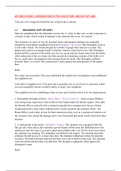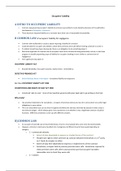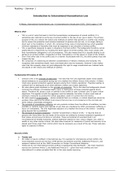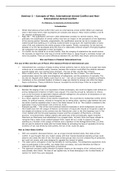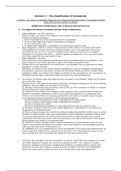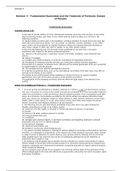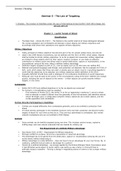The University of Nottingham (UON) • Law LLB
Latest uploads for Law LLB at The University of Nottingham (UON). Looking for Law LLB notes at The University of Nottingham (UON)? We have lots of notes, study guides and revision notes available for Law LLB at The University of Nottingham (UON).
-
42
- 0
-
7
Modules Law LLB at The University of Nottingham (UON)
Notes available for the following courses of Law LLB at The University of Nottingham (UON)
Popular books The University of Nottingham (UON) • Law LLB
Latest notes & summaries The University of Nottingham (UON) • Law LLB
An in-depth yet succinct note of everything you need for tort law. Vital for crunch hour.
These notes are aimed at 1st-year tort law students. They go into lots of detail on the areas such as assault, battery, and false imprisonment, and also go on to consider harassment. The notes contain hundreds of key cases for the 1st-year exam.
These notes are aimed at 1st-year tort law students. They cover the common law, types of visitors and entrants, where the 1957 Act applies, types of duty, how duties can be excluded, liability to non-visitors (Occupiers' Liability Act 1984), and more. The notes include the details on many cases that are imperative to know.
These notes are aimed at 1st-year tort law students. They include lots of detailed information (including many cases) on public and private nuisance and the rule in Rylands v Fletcher.
These notes are aimed at 1st-year tort law students. They contain information on the Compensation Act 2006, remoteness of damage, intervening causes, joint & several tortfeasors, and many other areas. The notes contain all the important & necessary cases you could need to know for your 1st-year exam.
The purpose of this summary is two-fold: first and foremost, it is to set the scene of the kind of proposition involved by international humanitarian law—of the very idea of a regulation of hostilities and some of its key principles. We shall then attend to the second purpose of this summary—and that is the intended function of international humanitarian law (jus in bello) when set against other aspects of the public international law corpus (such as the international legal regulation of fo...
In this summary, we shall turn our attention to the situations in which international humanitarian law applies. We will explore the historical notion of ‘war’, as distinct from today’s notion of an armed conflict. We will also consider the distinction that the law draws between an international armed conflict and a non-international armed conflict. Finally, we will consider whether any other types of armed conflict exist in addition to international and non-international armed conflicts.
Once we have identified the concept of an (international) armed conflict, we can then turn to the vexed question of the rules that govern the classification of combatants—that is the process which determines which combatants are privileged or unprivileged as a matter of international humanitarian law. The need for this purpose is rooted in the notion of prisoner-of-war status. We shall come to terms with the considerable energies that the law has spent on developing the rules for classificatio...
In this seminar, we will consider (1) the fundamental guarantees afforded to persons hors de combat as well as the protections afforded to particular classes of persons. The classes of persons we shall consider are (2) the wounded and sick; (3) prisoners of war; and (4) women and children.
In this seminar, we shall begin to investigate the protections afforded to civilians by international humanitarian law. Our concern will not be with civilian protection during belligerent occupation, but, rather, the protections given to civilians when their state is not under occupation. This question has been raised acutely in the context of aerial warfare, so that our concentrations will focus on a case study— in the form of the aerial campaign conducted by member states of the North Atlant...


